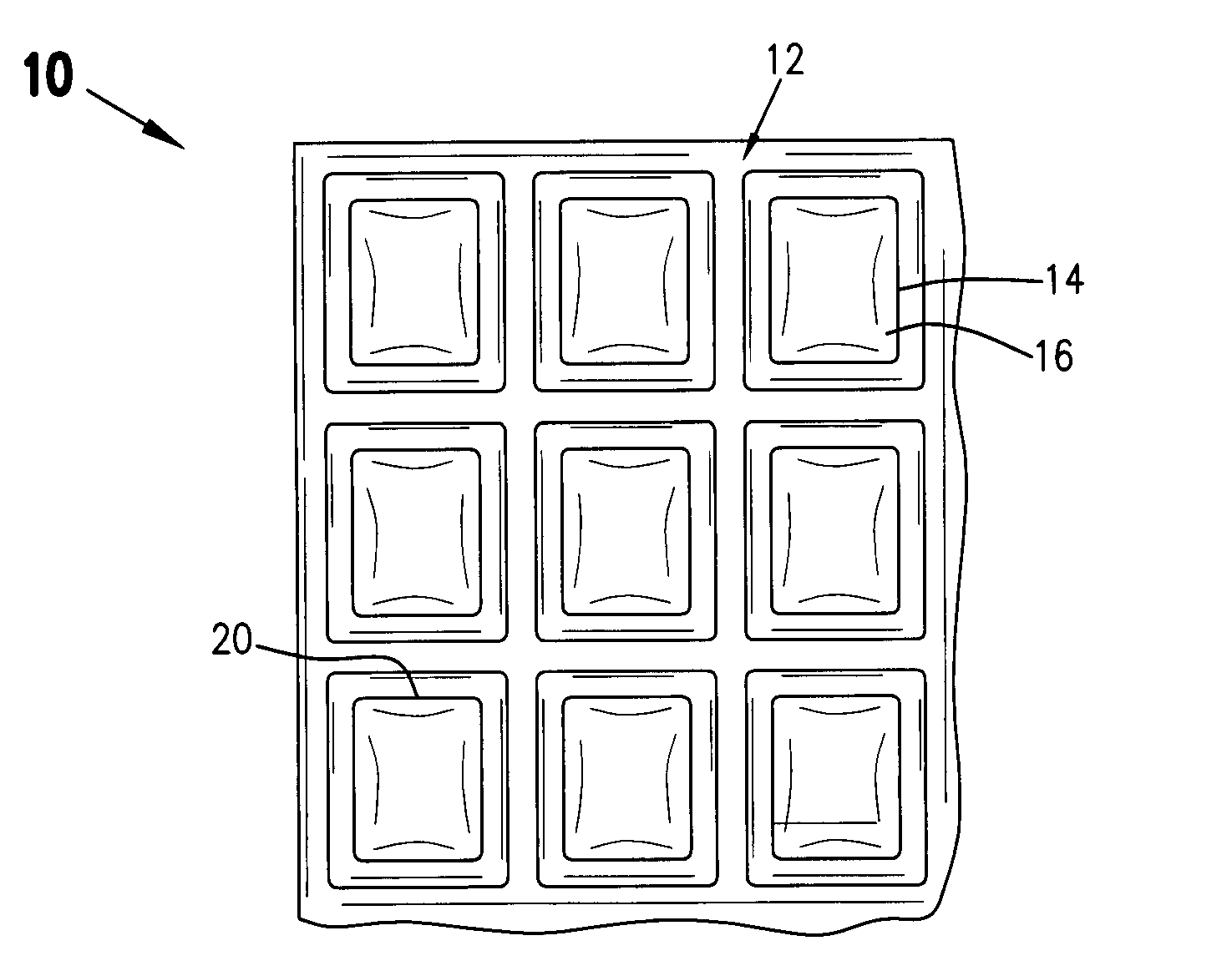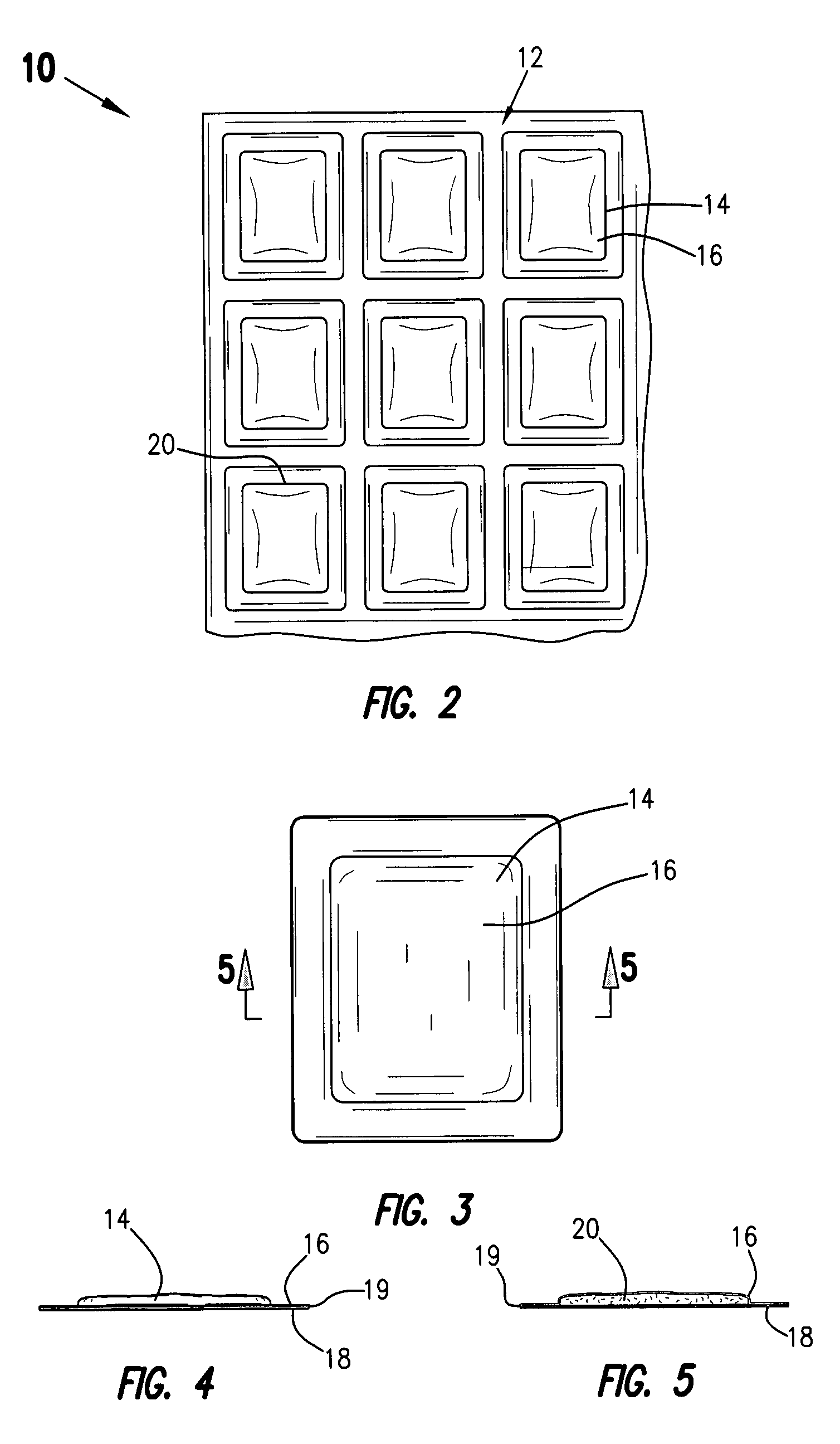Flavor emitting compositions, devices and packaged food products therewith
a technology of compositions and flavor, applied in the field of flavor emitting compositions, devices and packaged food products therewith, can solve the problems of difficulty in traditional flavoring methods, inability to withstand the intense heat of baking process, and ineffective current methods of flavoring to deliver robust or enhanced flavors
- Summary
- Abstract
- Description
- Claims
- Application Information
AI Technical Summary
Benefits of technology
Problems solved by technology
Method used
Image
Examples
example 1
[0086]A lime flavorant emitting composition was prepared according to the following protocol. 10 grams of silica gel having a porous surface with an average pore size of about 300 Å was placed in a screw top glass jar, to which was added 10 grams of lime essence from International Flavors and Fragrances, Inc. (IFF), New York, N.Y., in a 1:1 ratio by-weight, which sat for 48 hours. The silica gel is known as “B” type and is available from Kaltron, Bensenville, Ill. or Transo-Pharm, Blue Bell, Pa. The silica gel was particulate, having a diameter range of 0.1-0.5 mm. The jar was capped tightly and hand shook for about five minutes, until it appeared that the flavorant was equally dispersed with the silica gel. The jar was opened and a spatula used to further increase the dispersing of the flavorant. Once it appeared the flavorant was dispersed evenly, and that the silica gel appeared to be moist the composition was allowed to set for 48 hours to permit the silica gel to absorb the fla...
example 2
[0087]The composition in Example 1 was scaled up as follows: 1250 g of silica gel having a porous surface with an average pore size of about 300 Å, was added to the bowl of a standard Kitchen Aid® brand countertop mixer. After which, 1250 g of lime flavorant from IFF was added to the bowl. The head of the mixer was lowered into the bowl and the mixer was actuated at a speed such that no dust was dispersed from the silica gel. After approximately five minutes, the mixer was disengaged, and the gel was inspected for flavor dispersion. Once the flavorant appeared to be well blended and the silica gel appeared to be moist, the mixture was transferred to an appropriate container and allowed to equilibrate for 48 hours. This allowed the gel and flavorant to equilibrate and the gel to absorb the lime flavorant. This yielded a composition similar to Example 1.
example 3
[0088]A tutti frutti flavorant emitting composition was prepared according to the following protocol: 10 grams of silica gel having a porous surface with an average pore size of about 300 Å was placed in a screw top glass jar, to which was added 10 grams of tutti frutti essence from International Flavors and Fragrances, Inc. The silica gel was “B” type and available from Kaltron or Transo-Pharm. The silica gel was particulate having a diameter range of 0.1 to 0.5 mm. The jar was capped and hand shook for about 5 minutes, until it appeared the flavorant was uniformly dispersed with the silica gel. The top of the jar was removed and a spatula used to further increase the dispersion of flavorant. Once it appeared that the flavorant was dispersed evenly, and that the silica gel appeared moist, the composition was allowed to set for 48 hours to allow the silica gel to absorb the flavorant, thus stabilizing it. This yielded a flavorant emitting composition of 0.60 gram / cc.
PUM
 Login to View More
Login to View More Abstract
Description
Claims
Application Information
 Login to View More
Login to View More - R&D
- Intellectual Property
- Life Sciences
- Materials
- Tech Scout
- Unparalleled Data Quality
- Higher Quality Content
- 60% Fewer Hallucinations
Browse by: Latest US Patents, China's latest patents, Technical Efficacy Thesaurus, Application Domain, Technology Topic, Popular Technical Reports.
© 2025 PatSnap. All rights reserved.Legal|Privacy policy|Modern Slavery Act Transparency Statement|Sitemap|About US| Contact US: help@patsnap.com



